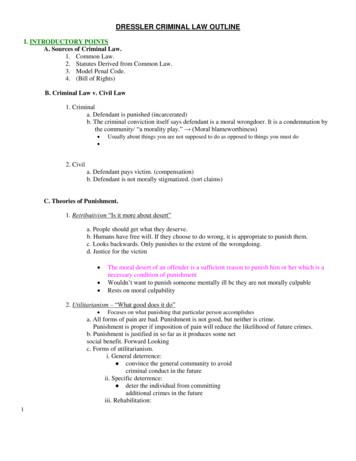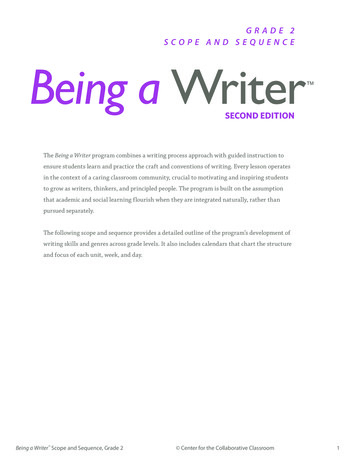Criminal Court City Of New York
Criminal Courtof theCity of New YorkDrug Court InitiativeAnnual Report2015WWW.NYCOURTS.GOV/NYCDRUGCOURT1
NEW YORK CITYCourthouse Locations Bronx Criminal Court215 E.161st Street, Bronx, NY 10451- Drug Court265 E.161st Street, Bronx, NY 10451 Queens Criminal Court125-01 Queens Blvd., Kew Gardens, NY 11415- Drug Court Queens Summons120-55 Queens Blvd., Kew Gardens, NY 11415 Midtown Community Court314 W. 54th Street, New York, NY 10019- Drug Court BRONX Citywide Summons346 Broadway, New York, NY 10013 NEW YORK Manhattan Criminal Court100 Centre Street, New York, NY 10013- Drug Court Brooklyn Criminal Court 120 Schermerhorn Street, Brooklyn, NY 11201- Drug Court Red Hook Community Justice CenterKINGS88-94 Visitation Place, Brooklyn, NY 11231- Drug Court Staten Island Criminal Court26 Central Ave., Staten Island, NY 10301- Drug Court RICHMOND2 NYC Criminal Court - Drug Court Initiative 2015 Annual ReportQUEENS
CRIMINAL COURT OF THE CITY OF NEW YORK DRUG COURT INITIATIVE2015 ANNUAL REPORTPublished July 2016Hon. Melissa C. Jackson, Administrative JudgeHon. Alexander Jeong, Deputy Administrative JudgeJustin Barry, Chief ClerkLisa Lindsay, Problem Solving Courts CoordinatorEditor: Lisa Lindsay and Justin BarryPhotographers: Darren Edwards and Shama GreenidgeWriter: Darren EdwardsContributor: Tara BegleyCover Photo: 120 Schermerhorn’s lobby ceilingTABLE OF CONTENTSPAGEExecutive Summary / Introduction4Summary—All Courts5Comprehensive Screening8Brooklyn Misd. Veterans Treatment Court9Misdemeanor Brooklyn Treatment Court10Screening & Treatment Enhancement Part12Manhattan Misdemeanor Treatment Court14Manhattan Diversion Courts16Queens Misdemeanor Treatment Court18Staten Island Treatment Court20STATISTICAL SUMMARY2260,562FEATUREDHon. Craig S. Walker shakes the hands of veteranmentors at the opening ceremony of the first Veterans Court in Brooklyn.The total number of drug court referrals citywidebetween 1998 and 2015.Includes MBTC, MMTC, MBVTC, MTC, QMTC, SITC, STEP, MDC-N, MDC-73 and MDC-92.WWW.NYCOURTS.GOV/NYCDRUGCOURT3
IntroductionExecutive SummaryThis report profiles the judges, staff and participants ofthe New York City Criminal Court Drug Court Initiative.Implemented in 1998 with the opening of the ManhattanTreatment Court, the Drug Court Initiative was developed to make treatment available to non-violent, substance-abusing offenders as an alternative to incarceration with the goal of reducing criminal behavior and improving public safety. Since then, the Drug Court Initiative has expanded to include courts in all five countiesof the City of New York. In order to make these programs accessible to all eligible offenders, Criminal Courtimplemented a Comprehensive Screening Program toevaluate every person charged with a criminal offense todetermine appropriateness for court-monitored substance abuse treatment.Each court was developed with input from local prosecutors, the defense bar, treatment providers, probationand parole officials and court personnel and all operateunder a deferred sentencing model with participantspleading guilty to criminal charges prior to acceptanceinto the program. Successful completion of the programresults in a non-jail disposition which typically involves awithdrawal of the guilty plea and dismissal of the charges. Failure to complete the program brings a jail or prison sentence. All of the drug courts recognize the diseaseconcept of addiction and utilize a schedule of interimsanctions and rewards, bringing swift and sure judicialrecognition of infractions and treatment milestones.Judges, lawyers and clinical staff recognize that relapseand missteps are often part of the recovery process, butparticipants are taught that violations of court and societal rules will have immediate, negative consequences.This successful drug court model, together with our excellent judges, clinical and court staff, are responsiblefor Drug Court Initiative’s retention and graduationrates.Some 2015 Drug Court Initiative milestones: *†‡ 3,962 defendants were referred to drug courtsfor evaluation; †‡ †‡ 708 defendants agreed to participate and pledguilty; and405 participants graduated from drug court.*Depending on the court, not everyone who is referred is enteredinto the UTA.†Statistical results originate from data inputted in UTA between1/1/15 and 12/31/15.‡Includes MBTC, MMTC, MBVTC, MTC, QMTC, SITC, STEP, MDC-N,MDC-73 and MDC-92. These data include MBVTC and excludes BTC, BXTC and QTC.For close to two decades, the New York City CriminalCourt Drug Court Initiative has provided a highly effective alternative to incarceration for those suffering fromserious drug and alcohol addiction. Studies have shownthat drug court reduces crime, saves taxpayers money,combats addiction and restores families.Inspired by that mission, the Criminal Court officiallyopened its first misdemeanor veterans treatment courton November 18, 2015 in Brooklyn Criminal Court. TheBrooklyn Misdemeanor Veterans Treatment Court(BMVTC) was established to acknowledge, honor andsupport veterans in the criminal justice system by ensuring comprehensive treatment and individualized services, thereby allowing the veterans to live healthy andproductive lives within the community. Every eligibleveteran is assigned a court case manager who will develop a proposed treatment plan and a veteran mentor whowill provide additional support. Judge Craig Walker, athirteen year Navy veteran, is the presiding judge. So,“Ooh Rah”, “Hooah”, and “Hooyah” to providing muchneeded services to those who have served our country.Many individuals and organizations continue to play arole in the success outlined in these pages. CriminalCourt wishes to acknowledge the Deputy Chief Administrative Judge for New York City Courts Fern Fisher andAdministrative Judge for New York City Criminal CourtMelissa Jackson for their unwavering support provided tothe City’s drug courts. Their support has been integralin ensuring the success and validation of the drug courts.Criminal Court would also like to thank Supervising Judges William McGuire (Bronx), Michael Yavinsky (Kings),Tamiko Amaker (New York), Deborah Stevens Modica(Queens) and Alan Meyer (Richmond), who work hand-inhand with central administration to make these programs successful.Director of the Unified Court System Office of Policy andPlanning Hon. Sherry Klein Heitler and her staff, especially Kerry Ward, Valerie Raine and Sky Davis have beeninvaluable in their support, both technical and administrative, as have Frank Wood, Amelia Hershberger, Elizabeth Daich and Robyn Cohen from the Unified Court System Division of Grants and Program Development.Criminal Court would like to acknowledge the interagency commitment it takes to ensure the overall executionand success of the many projects and programs underthe Drug Court Initiative. The District Attorneys’ officesof the five boroughs, the Office of the Special NarcoticsProsecutor, the Legal Aid Society and other defenderassociations throughout the City deserve special mentionfor the support they have (Cont’d on the next page)4 NYC Criminal Court - Drug Court Initiative 2015 Annual Report
Summary Information - All CourtsDRUG COURT ACRONYMSEligibility CriteriaEligibility criteria are determined by the specifictarget populations decided by the steering committees during the planning phase of each drug court.BMVTC - Brooklyn Misdemeanor Veterans Treatment CourtBTC - Brooklyn Treatment CourtBXTC - Bronx Treatment CourtBXMTC - Bronx Misdemeanor Treatment CourtMBTC - Misdemeanor Brooklyn Treatment CourtMDC-N - Manhattan Diversion Court, Part NMDC-73 - Manhattan Diversion Court, Part 73MDC-92 - Manhattan Diversion Court, Part 92MMTC - Manhattan Misdemeanor Treatment CourtMTC - Manhattan Treatment CourtQMTC - Queens Misdemeanor Treatment CourtQTC - Queens Treatment CourtSITC - Staten Island Treatment CourtSTEP - Screening & Treatment Enhancement Part (Brooklyn)See the table below for specific eligibilitycriteria in each ndersNon-violentFirst FelonyOffenders& n-violentFirst FelonyOffenders& PersistentMisdemeanor OffendersNon-violentFirst olent Non-violentFirst Felony First FelonyOffenders & Offenders entFirst FelonyOffenders &ProbationViolatorsMisdemeanorOffendersMust beVeteransSpecific CriteriaDrug Sale –FelonyNNYNYYYYYNDrug Possession- FelonyNNYNYYYYYNDrug Possession- MisdemeanorYYNYYY*NNNYDWINNNNNNNNNYNon-DrugCharge - FelonyNNNNYYNNNNNon-DrugCharge – MisdemeanorYYNYYY*NNNYViolations ofProbationYYYYNYYYYYPrior FeloniesAgesVeteransYYNYY **N†NNNY16 16 16 16 16 16 16 16 16 16 YYYYYYYYYY* Where the prosecutor has agreed to reduce the charges, STEP will accept pleas on some misdemeanor cases.* *Misdemeanor cases only† Defendant allowed to participate upon plea of guilty to misdemeanor offense may have prior felony convictions.10,722The total number of drug court pleas citywidebetween 1998 and 2015.Includes MBTC, MMTC, MTC, MBVTC, QMTC, SITC, STEP, MDC-N, MDC-73 and MDC-92.(Cont’d from previous page) shown these innovative programs. They all have worked alongside the Courts to implement the provisions of the Judicial Diversion Law. Lastly, without our partners in the treatment community, drugcourts would not be able to exist.WWW.NYCOURTS.GOV/NYCDRUGCOURT5
Summary Information - All CourtsTypes of Arraignment ChargesFor purpose of analysis, the arraignment charges of defendants entering into our drug courts are divided intofelony/misdemeanor and drug/non-drug designations. In 2015, about fifty-eight percent (58%) of drug courtparticipants were arraigned on felony charges – and of those, thirty-six percent (36%) were arraigned ondrug charges. Thirty-five percent (35%) of participants were arraigned on misdemeanor charges – and ofthose, twenty-one percent (21%) were arraigned on drug charges. Two percent (2%) of the participantswere arraigned on a drug violation charge and five percent (5%) of the data was unknown.16STEPMean TimeBetween Arrestand 015034STEP6972SITCQMTCMean TimeBetween Arrestand Plea(Days)12016STEPMean TimeBetween Assessment and DC-72166MDC-930501001506 NYC Criminal Court - Drug Court Initiative 2015 Annual Report200250
*†2015 Drug Court Referrals - CitywideBTC1,11520%BXTC393MDC-92 C1,69330%MDC-731022%MDC-N992%*†2015 Drug Court Pleas - C18QMTC 1%686%SITC797%*†2015 Age of Drug Court Participants*†2015 Gender of Drug Court ��2015 Ethnicity of Drug Court ParticipantsAsian/Pacific C160140120100806040200African American/Black West Indian*†2015 Drug of Choice of Drug
Queens Criminal Court 125-01 Queens Blvd., Kew Gardens, NY 11415 - Drug Court Queens Summons 120-55 Queens Blvd., Kew Gardens, NY 11415 Midtown Community Court 314 W. 54th Street, New York, NY 10019 - Drug Court Citywide Summons 346 Broadway, New York, NY 10013 Manhattan Criminal Court 100 Centre Street, New York, NY 10013
Rockingham (VA) Criminal Court Records Records Group Summary Title Criminal Court Records Reference Code Ccr Inclusive Dates 1813-1971 Document Creator Rockingham County Criminal Court Extent 31 Boxes, Two Bound Volumes Language English Location Rockingham County Circuit Court Bio/Historical
ON 22 APRIL 2022 THE DISTRICT COURT MADE THE FOLLOWING ANNOUNCMENT: Commencing 2 May 2022: District Court Criminal Practice Note 27 will replace District Court Criminal Practice Note 23 The Chief Judge has lifted the requirement that all court participants and jurors in District Court criminal trials be double vaccinated from 2 May 2022.
Rome Statute of the International Criminal Court 8 PART 1. ESTABLISHMENT OF THE COURT Article 1 The Court An International Criminal Court ("the Court") is hereby established. It shall be a permanent institution and shall have the power to exercise its jurisdiction over persons for the
4 New York City Criminal Court 2017 Annual Report Welcome — Administrative Judge Tamiko Amaker Hon. Tamiko Amaker Administrative Judge New York City Criminal Court We have reduced obstacles to bail by increasing the availability of credit card bail by removing ad-ministrative caps and as
BiH Bosnia and Herzegovina CIDS Centre for Integrity in the Defence Sector of Norway CC Criminal Code of Serbia CLB Criminal Law of the BiH CLFBiH Criminal Law of the FBiH CLRS Criminal Law of the Republic of Srpska CoE Council of Europe CPC Criminal Procedure Code of Serbia CPLB Criminal Procedure Law of BiH ECtHR European Court of Human .
The Local Court is the first point of contact many people have with the justice system in New . South Wales. In order of ascension, the District Court, Supreme Court, Courts of Appeal and Criminal Appeal, and the High Court of Australia follow. The Court deals with a wide range of matters across several jurisdictions. Criminal jurisdiction
DRESSLER CRIMINAL LAW OUTLINE I. INTRODUCTORY POINTS A. Sources of Criminal Law. 1. Common Law. 2. Statutes Derived from Common Law. 3. Model Penal Code. 4. (Bill of Rights) B. Criminal Law v. Civil Law 1. Criminal a. Defendant is punished (incarcerated) b. The criminal conviction itself say
The Being a Writer program combines a writing process approach with guided instruction to ensure students learn and practice the craft and conventions of writing. Every lesson operates in the context of a caring classroom community, crucial to motivating and inspiring students to grow as writers, thinkers, and principled people. The program is built on the assumption that academic and social .























